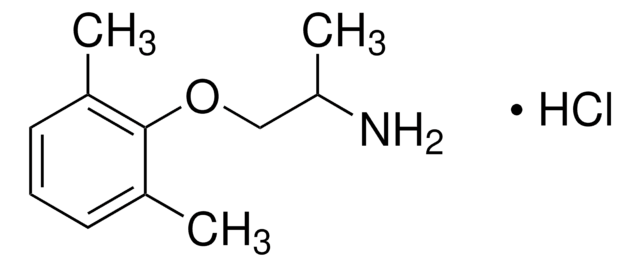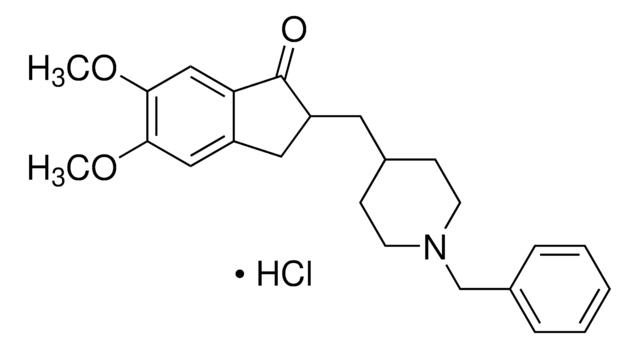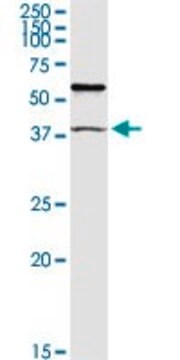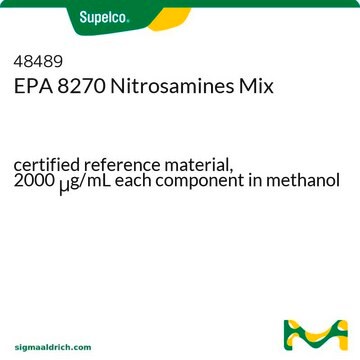SML0007
Cevimeline hydrochloride hemihydrate
≥95% (HPLC, NMR)
Sinonimo/i:
AF-102B, SNI-2011
About This Item
Prodotti consigliati
Saggio
≥95% (HPLC, NMR)
Forma fisica
powder
Condizioni di stoccaggio
desiccated
Colore
white to tan
Solubilità
H2O: ≥25 mg/mL
Ideatore
Daiichi-Sankyo
Condizioni di spedizione
wet ice
Temperatura di conservazione
−20°C
Stringa SMILE
O.Cl.Cl.C[C@@H]1O[C@@]2(CS1)CN3CC[C@H]2CC3.C[C@@H]4O[C@@]5(CS4)CN6CC[C@H]5CC6
InChI
1S/2C10H17NOS.2ClH.H2O/c2*1-8-12-10(7-13-8)6-11-4-2-9(10)3-5-11;;;/h2*8-9H,2-7H2,1H3;2*1H;1H2/t2*8-,10-;;;/m11.../s1
ZSTLCHCDLIUXJE-GMLJRNIPSA-N
Applicazioni
Azioni biochim/fisiol
Caratteristiche e vantaggi
Avvertenze
Danger
Indicazioni di pericolo
Consigli di prudenza
Classi di pericolo
Acute Tox. 3 Oral
Codice della classe di stoccaggio
6.1C - Combustible acute toxic Cat.3 / toxic compounds or compounds which causing chronic effects
Classe di pericolosità dell'acqua (WGK)
WGK 3
Punto d’infiammabilità (°F)
Not applicable
Punto d’infiammabilità (°C)
Not applicable
Certificati d'analisi (COA)
Cerca il Certificati d'analisi (COA) digitando il numero di lotto/batch corrispondente. I numeri di lotto o di batch sono stampati sull'etichetta dei prodotti dopo la parola ‘Lotto’ o ‘Batch’.
Possiedi già questo prodotto?
I documenti relativi ai prodotti acquistati recentemente sono disponibili nell’Archivio dei documenti.
Articoli
Muscarinic acetylcholine receptors are G protein-coupled receptors (GPCRs) and mediate acetylcholine actions in the CNS and non-nervous tissues. Learn more about acetylcholine receptors and their role in cell signaling.
Il team dei nostri ricercatori vanta grande esperienza in tutte le aree della ricerca quali Life Science, scienza dei materiali, sintesi chimica, cromatografia, discipline analitiche, ecc..
Contatta l'Assistenza Tecnica.








